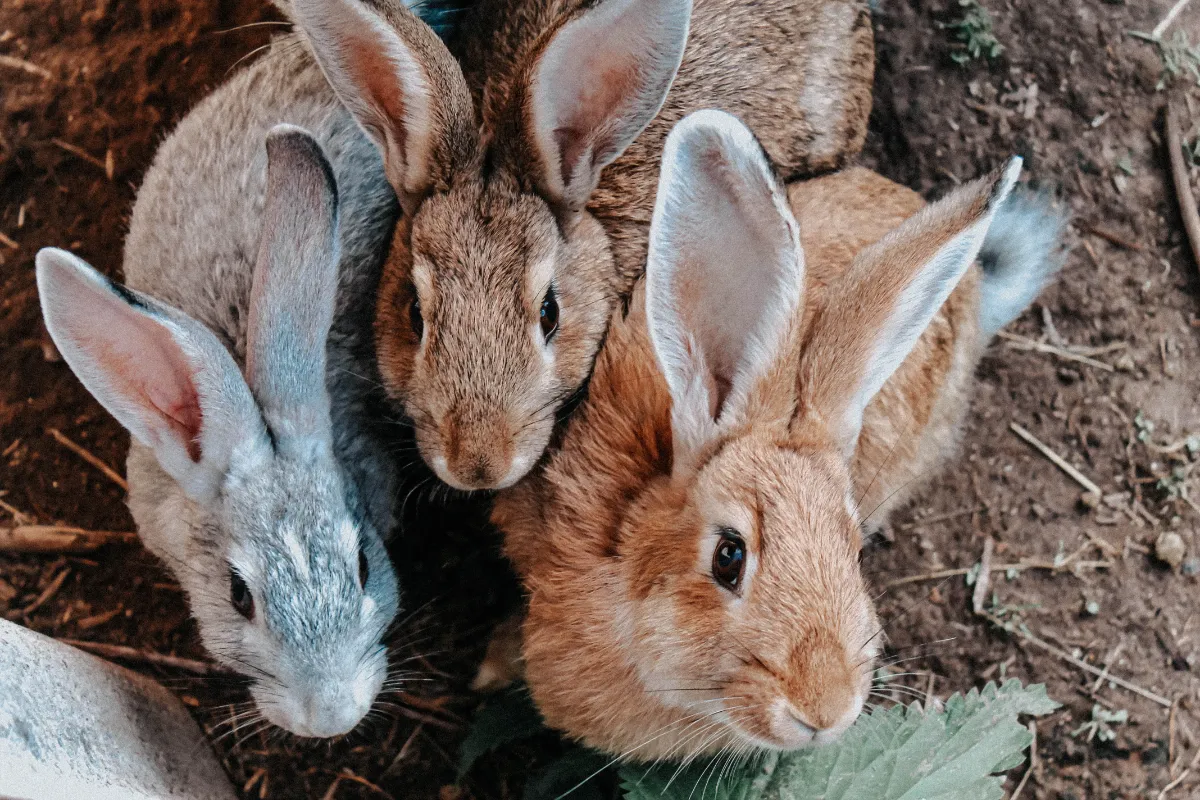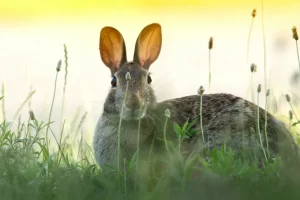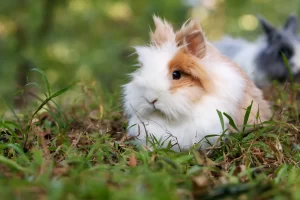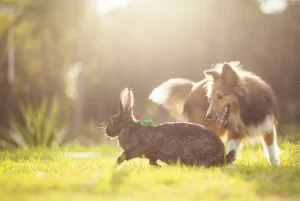Do you ever wonder why rabbits hop over each other? Well, here’s an interesting fact for you: rabbits engage in this behavior as a way of establishing their social hierarchy.
In rabbit societies, hopping over one another plays a significant role in social interaction and bonding. But what factors influence this hopping behavior? And how does it serve as a form of communication?
In this article, we will explore the fascinating world of rabbit hopping and uncover the evolutionary explanations behind this intriguing behavior.
In This Article
- 1 Key Takeaways
- 2 The Significance of Hierarchy in Rabbit Societies
- 3 Social Interaction and Bonding Through Hopping
- 4 Factors Influencing Rabbit Hopping Behavior
- 5 The Role of Playfulness in Rabbit Hopping
- 6 Rabbit Hopping as a Form of Communication
- 7 Evolutionary Explanations for Rabbit Hopping Behavior
- 8 Frequently Asked Questions
- 8.1 How Do Rabbits Determine Their Hierarchy Within a Group?
- 8.2 What Are Some Other Forms of Social Interaction and Bonding Among Rabbits?
- 8.3 Does the Size or Breed of a Rabbit Affect Their Hopping Behavior?
- 8.4 Are There Any Health or Physical Factors That Can Impact a Rabbit’s Ability to Hop?
- 8.5 Are There Any Other Animals That Exhibit Similar Hopping Behaviors to Rabbits?
Key Takeaways
- Hopping over each other is a behavior observed in rabbit societies to establish hierarchy and reinforce social bonds.
- Hopping serves as a form of communication and bonding activity among rabbits.
- Playfulness and hopping play a crucial role in maintaining the overall health and happiness of rabbits.
- Rabbit hopping behavior is an evolutionary adaptation that allows them to efficiently navigate their environment while conserving energy.
The Significance of Hierarchy in Rabbit Societies
You should definitely consider the significance of hierarchy in rabbit societies. Understanding hierarchy dynamics and dominance behavior is crucial when serving rabbits.
In rabbit societies, a clear social structure is established through a hierarchy. This hierarchy is formed based on dominance and submission. Dominant rabbits assert their authority through behaviors like chasing, nipping, or mounting subordinates. Subordinate rabbits, on the other hand, display submissive behavior such as crouching or avoiding eye contact.
This hierarchy helps maintain order and reduce conflicts within the group. It also ensures that resources like food and shelter are distributed fairly.
As someone serving rabbits, it’s important to recognize and respect this hierarchy. Providing separate spaces, feeding areas, and enrichment activities can help minimize conflicts and promote a harmonious environment for rabbits.
Social Interaction and Bonding Through Hopping
Rabbits bond and interact through hopping, which strengthens their social connections and fosters a sense of unity within the group. Hopping patterns among rabbits aren’t just random movements, but rather a form of communication and bonding activity.
When rabbits hop over each other, it serves as a way to establish hierarchy, reinforce social bonds, and maintain group cohesion. This hopping behavior can be observed during playtime or when rabbits are exploring their surroundings. By hopping over one another, rabbits are engaging in a physical activity that promotes trust and familiarity.
It also allows them to exchange scent signals, which further enhances their social connections. Understanding the significance of hopping patterns and bonding activities in rabbit societies can help us create enriching environments for these animals, promoting their overall well-being.
Factors Influencing Rabbit Hopping Behavior
There are several factors that can influence rabbit hopping behavior, such as age and social dynamics. Understanding these factors can help us better serve our furry friends and ensure their well-being.
Here are three key factors that can impact rabbit hopping behavior:
- Health and physical condition: Rabbits that are older or have health issues may hop less frequently or with less energy. It’s important to monitor their overall health and provide appropriate care to support their mobility.
- Social environment: Rabbits are highly social animals, and their hopping behavior can be influenced by their interactions with other rabbits. They may hop more frequently when they’re in the presence of other rabbits, as it serves as a means of communication and bonding.
- Environmental stimuli: The impact of environmental factors on rabbit hopping behavior is significant. Factors such as noise, temperature, and the presence of predators can affect their hopping patterns. Providing a calm and comfortable environment can help promote regular and healthy hopping behavior.
The Role of Playfulness in Rabbit Hopping
Playing is an essential part of a rabbit’s hopping behavior, as it allows them to express their natural instincts and engage in joyful movement. Playful behavior in rabbits isn’t just about having fun, but it also serves an important purpose in their physical and mental well-being.
When rabbits play, they engage in various activities such as chasing, hopping, and jumping. These actions provide them with much-needed physical exercise, helping to keep their muscles strong and their bodies healthy. Play also allows rabbits to release pent-up energy and reduce stress levels.
Additionally, playful behavior helps to stimulate their minds, keeping them mentally sharp and alert. So, the next time you see your rabbit hopping around and engaging in playful antics, remember that it’s not just for fun, but a crucial part of their overall health and happiness.
Rabbit Hopping as a Form of Communication
Have you ever wondered how rabbits use hopping as a form of communication? It may seem like a simple movement, but rabbits have developed a unique set of hopping techniques to convey different messages to each other. Here are 3 fascinating ways rabbits use hopping to communicate:
- Warning signals: When a rabbit feels threatened, it may perform a series of quick, short hops to alert others of potential danger. This rapid movement serves as a warning to the rest of the group, allowing them to take cover and stay safe.
- Establishing dominance: Rabbits in a social group often use hopping to establish their rank and assert dominance. They may hop over each other in a specific pattern, showing their superiority and maintaining the social hierarchy within the group.
- Mating rituals: During the breeding season, male rabbits showcase their agility and strength through hopping competitions. These contests involve intricate hopping patterns and jumps, serving as a way for males to attract potential mates and demonstrate their fitness.
Understanding these rabbit hopping techniques gives us a deeper insight into the complex communication system of these adorable creatures. Next time you see a rabbit hopping, remember that there may be more to it than meets the eye!
Evolutionary Explanations for Rabbit Hopping Behavior
Did you know that rabbits hop as an evolutionary adaptation to navigate their environment more efficiently? This unique locomotion strategy allows them to quickly maneuver through various terrains while conserving energy. Rabbits have long hind legs and powerful muscles that enable them to leap great distances, making hopping their preferred mode of transportation.
But what are the specific reasons behind this evolutionary adaptation? Let’s take a closer look at some of the advantages of hopping for rabbits:
| Evolutionary Adaptations | Locomotion Strategies | Benefits |
|---|---|---|
| Long hind legs | Leaping | Efficient movement |
| Powerful muscles | Rapid acceleration | Quick escapes |
| Lightweight body | Agile turns | Avoiding predators |
Frequently Asked Questions
How Do Rabbits Determine Their Hierarchy Within a Group?
In a rabbit group, dominance hierarchy is established through various communication methods. Rabbits determine their rank based on behaviors like mounting, chasing, and aggressive displays. This helps maintain order and reduce conflicts within the group.
What Are Some Other Forms of Social Interaction and Bonding Among Rabbits?
When rabbits interact socially, they engage in grooming rituals and territorial marking. These behaviors help them bond with each other and establish their hierarchy within the group.
Does the Size or Breed of a Rabbit Affect Their Hopping Behavior?
The size and breed of a rabbit can impact its hopping behavior. Larger rabbits may have more powerful hops, while smaller breeds may have quicker, more agile hops. Environmental factors can also influence hopping behavior.
Are There Any Health or Physical Factors That Can Impact a Rabbit’s Ability to Hop?
Health factors and physical limitations can indeed impact a rabbit’s ability to hop. Factors such as arthritis, injuries, or muscle weakness can affect their mobility. It’s important to ensure their overall health and provide appropriate care.
Are There Any Other Animals That Exhibit Similar Hopping Behaviors to Rabbits?
Other animals, like kangaroos and some frogs, also exhibit hopping behaviors. Hopping can provide evolutionary advantages such as increased speed and agility. It allows animals to navigate difficult terrains and escape predators more effectively.





